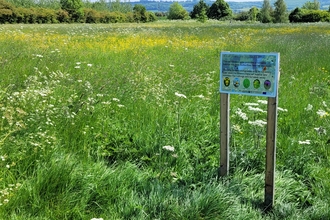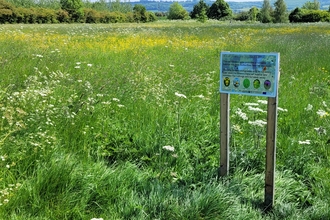Duck Brook once passed discreetly round the fringes of Battenhall Park in Worcester, almost completely hidden beneath scrub. It's overgrown channel had limited value for wildlife and at times of high flow the brook was prone to flooding nearby pathways. In Spring 2020 it was given a new lease of life by Worcester City Council and the Environment Agency.
Natural Networks was able to provide advice and funding towards the biodiversity outcomes of the project, which included:
- Creation of a new brook channel – this now meanders gently through the park, providing a variety of watery habitats for aquatic invertebrates and small fish. The longer brook channel and other new wetland features also store more flood water during heavy rain, providing multi-functional benefits to people as well as wildlife.
- Introduction of wildflowers – when weather conditions are suitable later this year, the new wetland habitats will be given a biodiversity boost by introduction of carefully selected wetland plants, all of which are native to the UK and adapted to living in wetland habitats. Species will include marsh marigold, meadowsweet, and purple loosestrife. These colourful wetland plants will help provide habitat for damselflies, bumblebees, and many other pollinating insects.
- Orchard planting – 12 fruit trees were given to Worcestershire Community Land Cooperative to plant in Duck Brook Community Orchard, just next-door. Local varieties including the famous Worcester Black pear now form a fruit tree avenue attractive to bees, butterflies and birds.
- Creation of better wildlife corridors – in towns such as Worcester, urban parks provide much needed 'stepping-stones' in which wildlife can find food and shelter. It is vital that these green spaces are linked by wildlife corridors, so hedgerows within the site have been widened to provide safe passage for birds, hedgehogs, and bats. Blossom and berry-rich species such as dog rose, crab apple and blackthorn were planted to add to the available food resources.
As the habitat enhancements settle into the park and wildflowers take hold, the biodiversity interest of the site will soar and the resilience of habitat networks through the town will increase. The hope is that this project will also create a more attractive park where people using the cycle and pedestrian pathways can experience the sights and sounds of birdsong, flowing water, and buzzing insects.
Join our natural Networks Officer Sean to find out more in the video below:
Video by James McDonald, Clear Picture Productions Ltd

Natural Networks funding increased to encourage more wildlife-rich habitats
Natural Networks grants, available for projects which aim to create or restore wildlife-rich habitats, have been increased to cover 70%…

Natural Networks success
A project to connect habitats and increase the abundance of wildlife in Worcestershire is celebrating the securing of funding to extend…

Wildlife and access improvements at The Knapp and Papermill
Work to make improvements for wildlife and people at a popular nature reserve will result in temporary path diversions and a one day…
